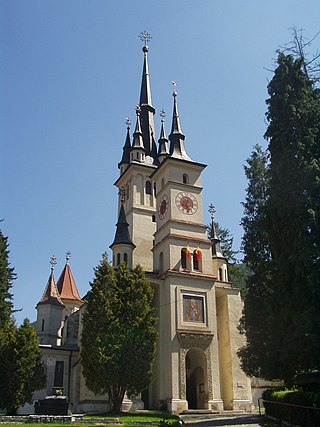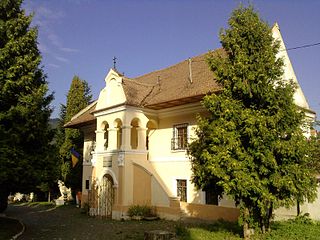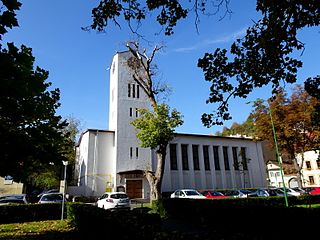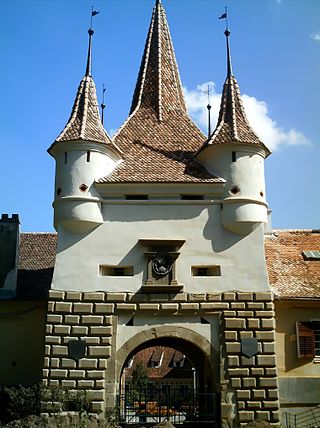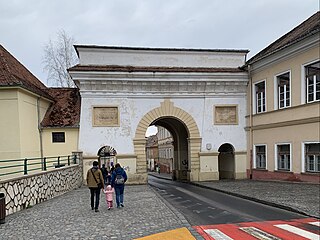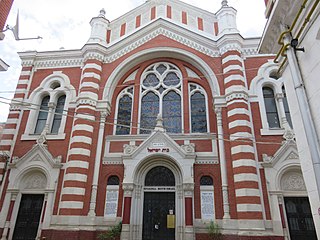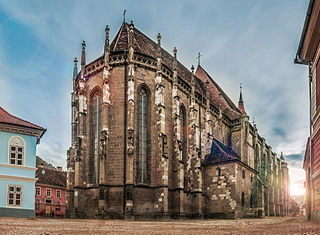Self-guided Sightseeing Tour #1 in Brasov, Romania
Legend
Guided Free Walking Tours
Book free guided walking tours in Brasov.
Guided Sightseeing Tours
Book guided sightseeing tours and activities in Brasov.
Tour Facts
1.4 km
23 m
Experience Brasov in Romania in a whole new way with our free self-guided sightseeing tour. This site not only offers you practical information and insider tips, but also a rich variety of activities and sights you shouldn't miss. Whether you love art and culture, want to explore historical sites or simply want to experience the vibrant atmosphere of a lively city - you'll find everything you need for your personal adventure here.
Activities in BrasovIndividual Sights in BrasovSight 1: St. Nicholas Church
Saint Nicholas Church is a Romanian Orthodox church in Brașov, dominating the historic district of Șcheii Brașovului. One of the oldest Orthodox churches in the country and an important cultural center for the Romanians in Țara Bârsei, it is documented as being built on the site of a wooden cross dating to 1292. The first mention of the original wooden church dates to 1399, with the stone church built between 1495 and 1519. The church is a registered historic monument of Romania under the LMI Code BV-II-m-A-11589, as part of an ensemble of monuments which also includes the First Romanian School.
Sight 2: The First Romanian School Museum
The First Romanian School is located on the grounds of the 15th-century St. Nicholas Church, itself located in the historic district of Șcheii Brașovului, in what is now Brașov, Romania. This is the first school on the territory of present-day Romania where Romanian language was used in teaching.
Sight 3: Biserica reformată Belvárosi
The church of the Reformed Church in downtown Brasov is located at Șaguna sor (Strada Andrei Șaguna) 3. The Calvinists originally had a monumental, eclectic-style 19th-century church in the city center, on Rezső boulevard, but this was destroyed by the communist power in 1963. A gymnasium was designated for the parish as a church on the outskirts of Bulgaria, which is still in use today.
Sight 4: Catherine's Gate
Get Ticket*Catherine's Gate in Brașov, Romania, was built by the Tailors’ Guild, in 1559 for defensive purposes to replace an old gate destroyed by a flood in 1526. It is named after St. Catherine's Monastery that was situated here in former times. It is the only original city gate to have survived from medieval times. In fact the central tower is only a part of the original gate; documents talk about the existence of a wooden structure which was demolished in 1827. The original structure can be seen at the Weaver's Bastion where the large model of Brașov in 1600 is displayed.
Sight 5: Poarta Schei
Șchei Gate in the Șcheii Brașovului neighborhood of Brașov, Romania, is right next to Catherine's Gate. It was built in between 1827 and 1828 in order to let through heightened traffic. The much bigger Catherine's Gate was demolished at the same time (1827), with the exception of the tower of the exterior gate, which was used as storage.
Sight 6: Sinagoga Beth Israel
The Brașov Synagogue, officially the Beth Israel Synagogue in Brașov is a Neolog Jewish congregation and synagogue, located at 29 Poarta Șchei Street in the center of Brașov, in Transylvania, Romania. Designed by Lipót Baumhorn in the Hungarian Secession style, the synagogue was completed in 1901, and is situated behind the street front, on a plot surrounded by houses. The synagogue plays a ritual role and the building complex includes a community seat and a kosher restaurant.
Sight 7: Statuia Johannes Honterus

The statue of Johannes Honterus, located in the courtyard of the Black Church in Brașov, near the south façade, unveiled on August 21, 1898, is a work of the Berlin sculptor Haro Magnussen. On the pedestal of the monument there are two bronze bas-reliefs. It is inscribed in the list of historical monuments 2004 under the code BV-III-m-B-11857.
Sight 8: Black Church
Join Free Tour*The Black Church, stands in the city of Brașov in south-eastern Transylvania, Romania. It was built by the local Transylvanian Saxon (German) community of the city during medieval times and represents the main Gothic-style monument in the country, as well as being the largest and one of the most important houses of worship in the region which belong to the Lutheran, i.e., Evangelical Church of Augustan Confession in Romania.
Share
Disclaimer Please be aware of your surroundings and do not enter private property. We are not liable for any damages that occur during the tours.
GPX-Download For navigation apps and GPS devices you can download the tour as a GPX file.
